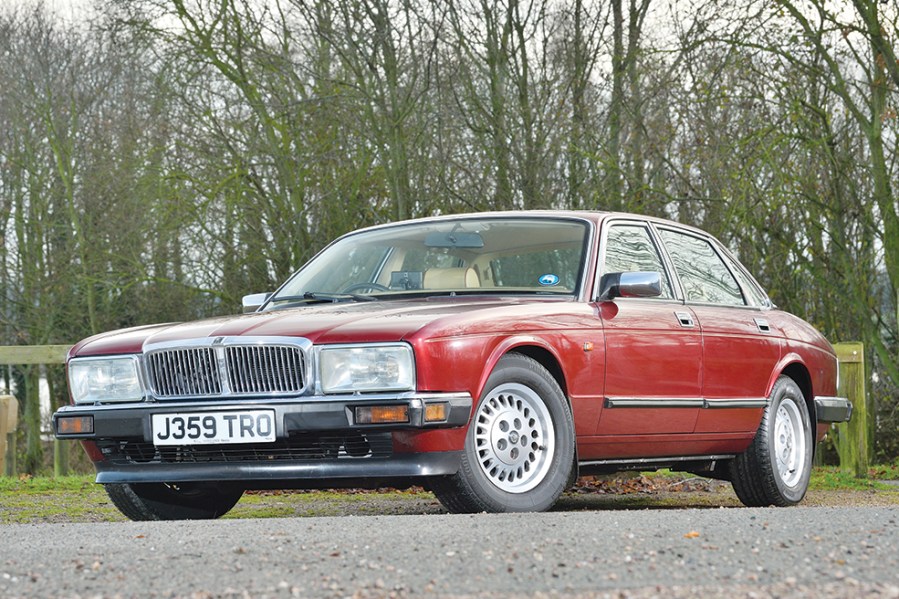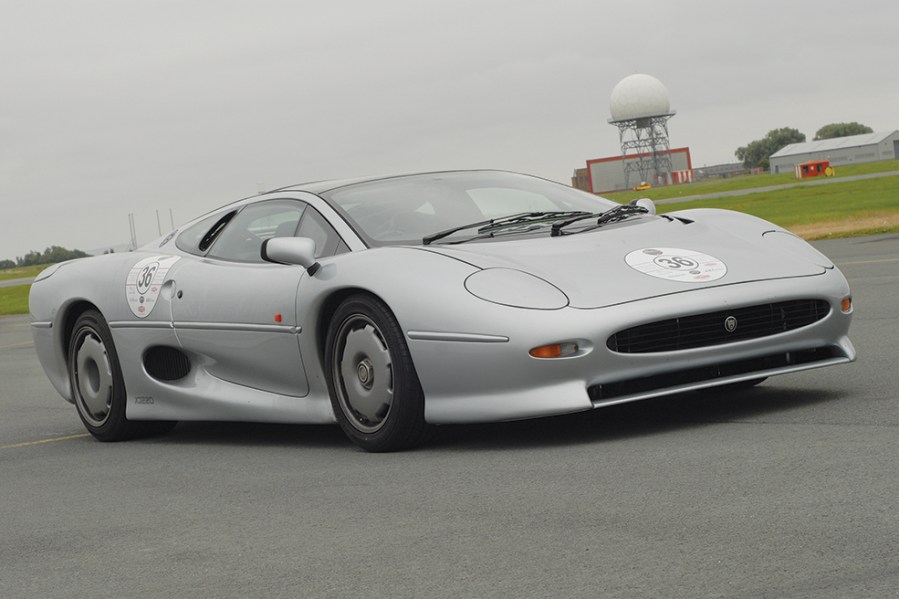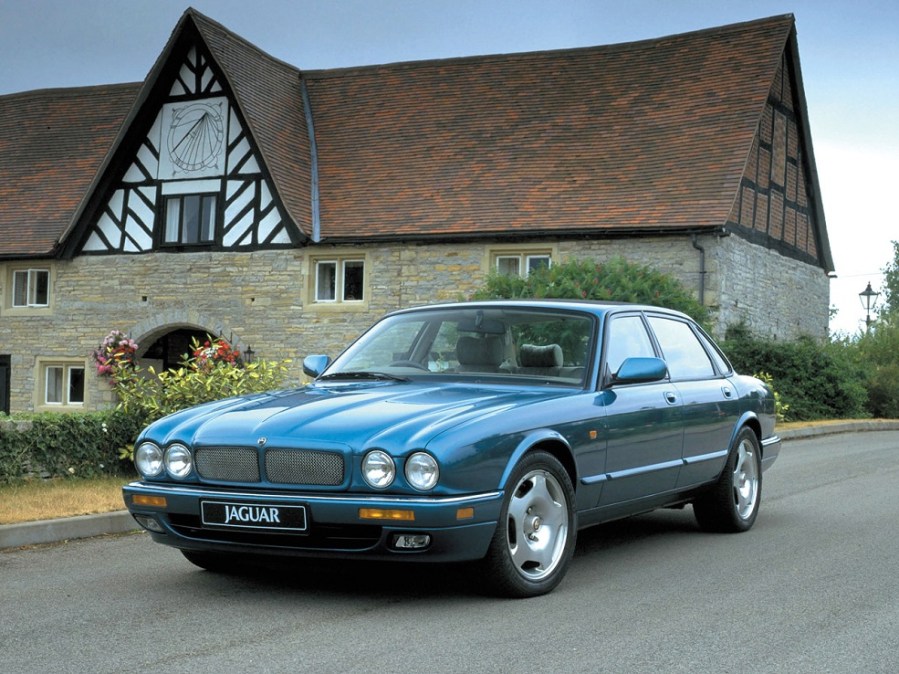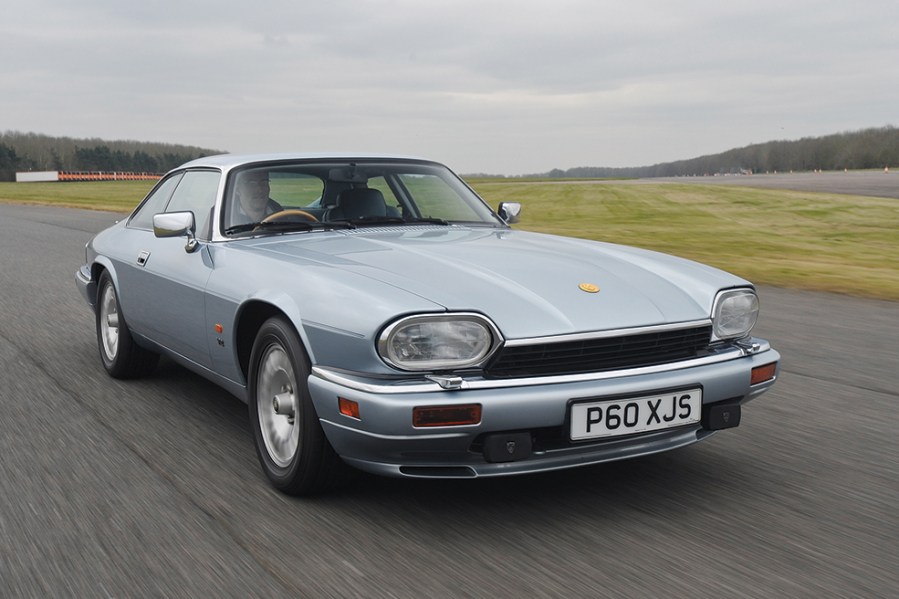Following Ford’s takeover in 1989, Jaguar underwent a transformation that led to the introduction of a range of capable models
Words: Iain Wakefield
The 1980s were challenging times Jaguar’s new boss Sir John Egan. When he took over the reins at a still independent Jaguar in April 1980, the company was seriously under performing and the quality of the finished product was at an all-time low. Under the new CEO’s direction Jaguar quickly started to tackle these issues but a bomb was about to land on Egan’s desk. In late 1989 the Ford Motor Company narrowly beat General Motors to the wire when it completed the purchase of Jaguar Cars for £1.6 billion with a promise that it would ‘build on Jaguar’s strengths and expand sales in Europe and the US’.
Despite all the corporate hype, the management at Ford were still reeling from the high price they’d had to pay for the Coventry-based car luxury maker. To justify the sale, Egan, brilliantly summed up his company’s worth by explaining to ‘Red’ Poling, the new boss at Ford, how Jaguar was made up of $500 million of ‘sausage’ and $2 billion of ‘sizzle’! Sir John’s eloquently put metaphor translated into Jaguars plant and equipment being the ‘sausage’, while the ‘sizzle’ element represented the iconic carmaker’s heritage.
The Coventry-based carmaker was convinced that, despite the worsening economic climate, it could continue to design and produce more interesting cars than Ford and to the relief of Jaguar’s board and the shareholders, the acquisition had also included the retention of the company’s design and engineering departments along with the marque’s extensive dealer network. However, it wasn’t all plain sailing and according to an advance guard of Ford cost engineers, the production facilities at Jaguar’s assembly plants were reputed to be far worse than the team had witnessed in Russian car plants – Ford had a huge mountain to climb to make its new acquisition more efficient.
In a bid to move the business forward, Ford approved a facelift for the ageing XJ-S in 1991 and with Jaguar’s swoopy looking F-Type replacement cancelled by Ford’s zealous bean counters, the cleverly revamped XJS (the hyphen was dropped on the revised model) would soldier on until being replaced by the V8-powered and Ford financed XK8 in 1996.
In 1994 Jaguar launched the XJ300 saloon, the first new model to be completely designed and engineered under Ford ownership. To produce the new Jaguar, Ford had spent £200 million on a facilities renewal programme at Brown’s Lane and Castle Bromwich and improvements to the production facilities included the introduction of state-of-the-art automated welding robots to assemble the XJ300’s curvaceous monocoque. The sheets came off the XJ8 (X308) saloon in 1997; a year after Jaguars’ new XK8 grand tourer broke cover. By now Jaguar had been owned by Ford for almost a decade and the final new model to see the light of the day was the retro-styled Jaguar S-Type. Introduced in late 1998, the S-Type was the result of a major investment by Ford and the new model would go on to be built at Jaguar’s expensively refurbished Castle Bromwich plant.
The S-Type was the final all new saloon launched in a decade that had seen Jaguar massively improve its market share and the quality of its products under the direction of the Ford Motor Company. In 1999 Ford placed Jaguar in its newly formed Premier Automotive Group along with Volvo, Aston Martin and Land Rover and two years later Jaguar would go on to introduce one of the most controversial Big Cats to ever to wear the famous growler on its nose – the Mondeo-based X-Type. Following is a brief profile of all the Jaguar models either built or launched during Ford’s first ten years of ownership of the company.
Jaguar XJS (1975–1996)
When Ford took control of Jaguar in late 1989, the XJ-S had been in production since 1975 and by the end of the 1980’s this contentious grand tourer was starting to look out of place when compared to fresher offerings from the likes of BMW and Mercedes-Benz. Offering the XJ-S with the AJ6 inline-six under its long bonnet rather than a 5.3-litre fuel guzzling V12 had managed to keep sales alive on both sides of the Atlantic and the pick of the bunch was the mighty XJR-S, a high-performance version produced by Jaguar Sport.
Despite surviving a couple of fuel crises and the economic downturn of the early 1990’s, the XJ-S continued to find new owners and a major revamp in 1991 breathed new life in the model. Now marketed as the hyphenless XJS, Jaguar’s revitalised grand tourer was offered as either a stylish looking coupe or a fully blown convertible. A very small number of XJS’s were converted into a three-door ‘shooting brakes’ badged as the Lynx Eventer. Race prepared XJS coupe’s scored numerous success on the international motorsport scene, while a seemingly never-ending range of limited editions helped keep this hugely underrated grand tourer alive in the showroom.

Jaguar XJ40 (1986–1994)
Launched in 1986, the XJ40’s development had been a protracted affair due to cash flow issues with Jaguar’s previous parent company, British Leyland. Although Jaguar enthusiasts will claim how the XJ40 was the last model the company founder Sir William Lyons had any direct involvement with as a consultant (he died a year before the XJ40 was launched), the manufacturing process was a huge improvement on how the company had built cars in the past.
The XJ40’s bodyshell contained fewer individual panels than the model it replaced, and the finished product was not only more rigid, the panel gaps were greatly improved, which had the bonus of lowering the amount of wind noise in the cabin. When the XJ40 was first introduced, only two engine configurations were available, a 2.9-litre or a 3.6 litre AJ6 inline-six. A major revamp in 1990 saw the larger engine replaced with a 4.0-litre unit and a year later the 2.9-litre inline six was ditched in favour of a 3.2-litre unit.
Although the XJ40’s build quality received a lot of criticism the car was pure Jaguar, even though it had square headlights and base models featured cloth rather than leather seat facings. The high performance XJR was originally launched with a 3.6 litre inline-six, but later cars were fitted with TWR tuned 4.0 litre unit featuring uprated cams and a redesigned inlet manifold.

Jaguar XJ220 (1992–1994)
Jaguar developed the sleek looking XJ220 in conjunction with Tom Walkinshaw Racing and built the car at TWR’s Bloxham works using a bonded and riveted honeycomb alloy tub topped off with a hand-crafted alloy body. However, despite the supercar’s drop-dead gorgeous looks, the version that ended up in the showroom was far removed from the V12-powered, all-wheel drive concept shown at the 1988 Birmingham International Motor Show. Engineering requirements resulted in the XJ220 going into production with a 3.5 litre twin-turbocharged 524bhp V6 engine driving just the rear wheels instead, a huge disappointed for many investors.
This drastic change in specification, combined with a steep price rise for the finished car and the collapse of the exotic car market in the early 1990s resulted in many of the 1400 plus deposits Jaguar had taken for the XJ220 being cancelled and only 274 examples of this 213mph (3.6 sec 0-60) supercar were ever produced.
You’ll rarely see a Jaguar XJ220 outside a museum or a private collection and when these cars do change hands, usually at auction, they sell for amounts that look like telephone numbers. Anyone who’s lucky enough to win a million pounds on the Lottery should have enough in the bank to buy a pair of XJ220’s with enough left over to keep the cars on the road for a year, as well as enjoying a two-week Mediterranean cruise to get over the shock.

Jaguar XJ (X300) (1994–1997)
After a lengthily gestation period, Jaguar launched the new X300 saloon in 1994 along with the supercharged 321bhp XJR, making the revised XJ the first car to be developed and produced completely under Ford ownership. Rather than produce a brand-new design, the X300 was considered a much-improved evolution of the outgoing XJ40. The previous model’s flat bonnet had been replaced by a fluted design created by Geoff Lawson and carried the profile of the car’s twin round headlamps almost to the base of the windscreen scuttle.
At the back of the car, the new shape wrap-round light clusters nestled neatly into the re-profiled rear wings, while a pair of fully integrated body coloured plastic mouldings replaced the previous model’s front and rear black and rubber bumper bars. The new XJ was introduced with a choice of engine options that included the revised AJ16 216bhp 3.2 or the 246bhp 4.0 litre inline sixes. The 155mph XJ12 saloon was powered by a 6.0-litre V12 and this car was the final Jaguar road car to be equipped with by a twelve-cylinder autobahn stomping engine.
Jaguar XK8 (1996–2005)
Jaguar launched the successor to the long in the tooth XJS to much acclaim in 1996 and badged its sleek new two-plus-two as the XK8. The new sports car was based on a modified version of outgoing grand tourer’s floorpan, while power came from a brand-new Ford-built V8 engine driving the XK8’s rear wheels through a new generation five-speed ZF automatic gearbox. The new sports car was available in either coupe or convertible format from day one and period road tests praised the new sportcar’s superb ride and handling characteristics.
Inside the XK8’s cabin, all the usual Jaguar refinements could be found in abundance and this stylish grand tourer was an immediate success, with annual sales far outstripping those of the outgoing XJS. In 1998 Jaguar upped the ante with the introduction of the Eaton supercharged XKR, a model easily identified by its more purposeful road wheels and rows of cooling louvres cut into the stylish bonnet.
Revisions to the range in the opening years of the new Millennium would see the XK8’s engine size increased from 3996cc to 4196cc and a heavily revised XK range would remain in production until this successful model was replaced by the F-Type midway through 2010.
Despite the XK8’s jaw dropping good looks, there are loads of bargains out there, but cheaper examples should be inspected carefully as there are a few well-known issues to watch out for. The most important one is corrosion attacking the base of the bulkhead where it meets the floor pan. Unfortunately, this problem is difficult to spot, as the front suspension beam shields the area and corrosion here can affect even the most highly polished examples.
Jaguar XJ8 (X308) (1997–2003)
The X308 was Jaguar’s first saloon to utilise the company’s brand new DOHC V8 following this very capable unit’s introduction in the XK8 sportscar. Externally, the new Jaguar looked very similar to the outgoing model. Although there had been a few minor styling changes to the bodywork the main changes were to the cabin, as the brand new XJ received a completely redesigned facia and instrument cluster.
It was under the car’s sculptured bonnet where the majority of Ford’s investment had gone into producing the new power unit, which was manufactured at Ford’s Bridgend engine plant in South Wales. Customers had the choice of three sized of engine: either a 370bhp 3.2 litre; a 290bhp 3.2 litre; or an Eaton supercharged 290bhp 4.0-litre in the revised 155mph XJR. Automatic transmission was fitted to all variants (a Mercedes-Benz five speed ‘box on the XJR) and Jaguar now had a car that it hoped could square up to the best that BMW and Mercedes-Benz were producing at the time.
Jaguar S-Type (1998–2007)
Jaguar’s design team went back to the Mk2 for inspiration when it penned the lines for the retro-looking S-Type. Although the car’s oval front grille, twin headlamps and curved rear quarter lights harked back to a bygone age, power came from either a highly efficient 2.5/3.0 litre V6 or a lusty 4.0 litre 300bhp V8 in the later introduced high performance S-Type R.
Ford had poured a huge amount of money into the S-Type’s development programme and to spread the cost the new Jaguar’s platform was shared with the newly launched US-built Lincoln LS and Ford Thunderbird. The new Big Cat was fitted with the company’s latest generation of coil sprung suspension and the set up provided sharp handling as well as a high degree of comfort. The S-Type was built at Jaguar’s Castle Bromwich factory and a facelift in the early 2000’s resulted with the car receiving a revised dash layout along with a modified grille and rear light clusters, while powertrain upgrades included a 4196cc V8 and a 2720cc Ford-sourced diesel.







